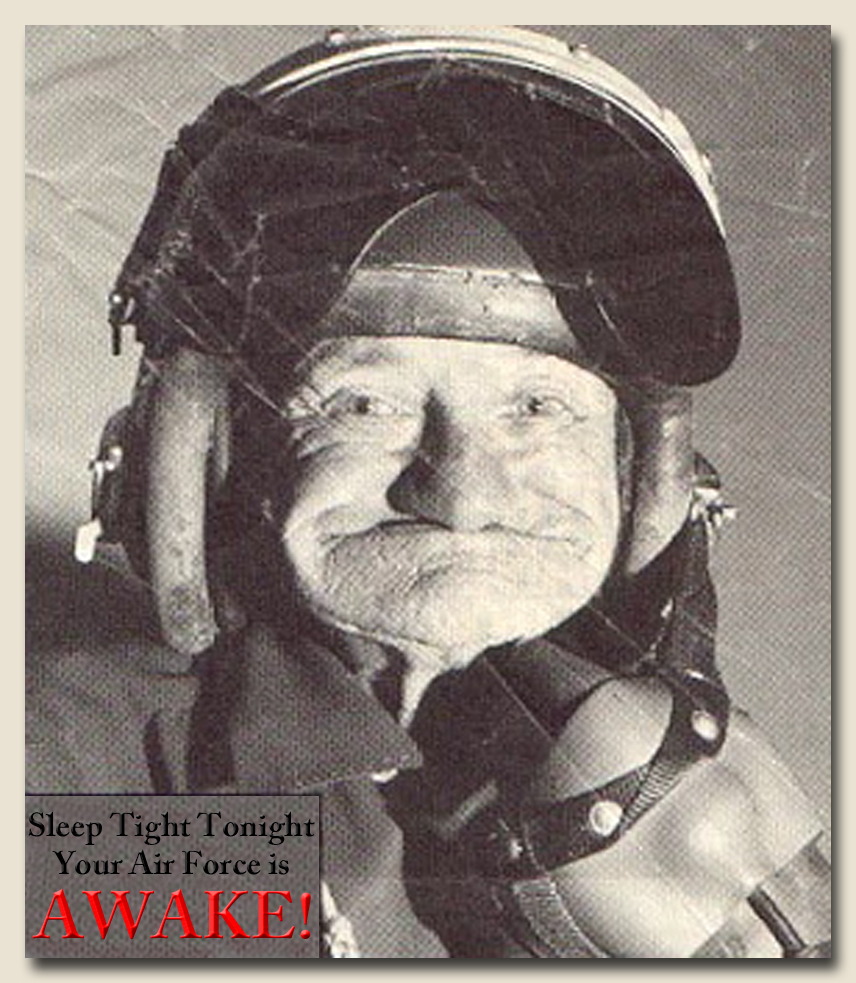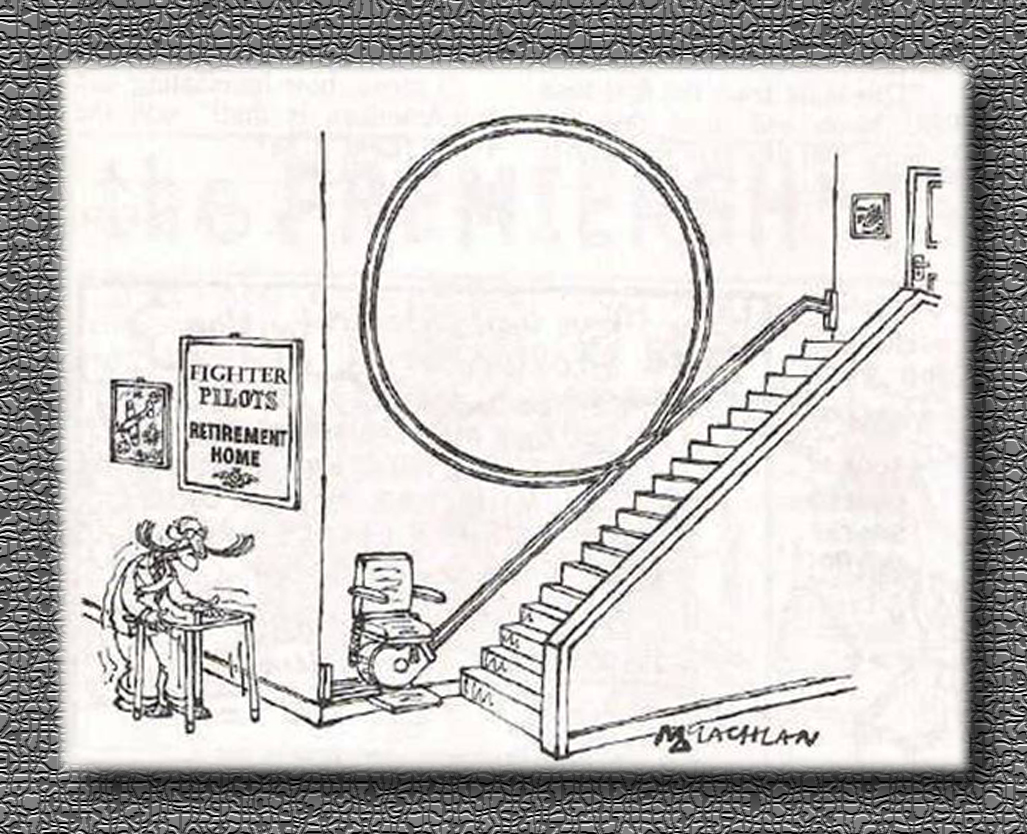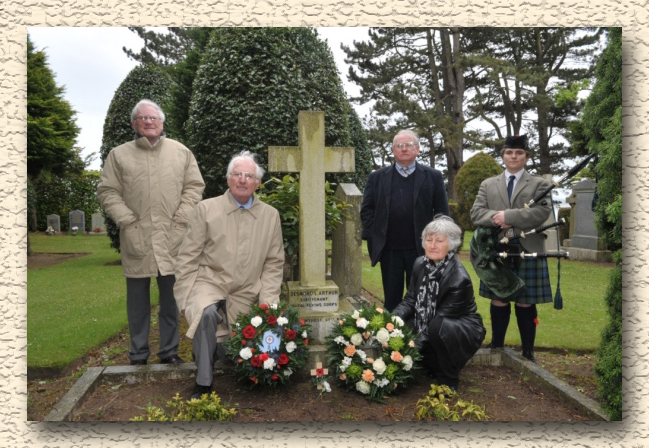If the title of this post is black and/or you see the fighter-pilot header, click on the title to view the featured-image header and continue reading. Header image credit: Justin Sullivan via aviationweek.com
On May 27, 1977, a collision between a KLM Royal Dutch Airlines 747 and a Pan American Airways 747 entered the record as the deadliest tragedy in the history of aviation. And to call it an accident, which we commonly do, is a gross misrepresentation of what happened.
The primary cause was a classic case of pilot error in which the KLM Captain ignored the cautions from his First and Second Officers and initiated a takeoff without clearance from the tower at the Tenerife Airport in the Canary Islands. Due to a combination of contributory causes, the Pan Am 747 had not yet cleared the runway and 583 people died.
One of the most significant and long-lasting lessons learned from this horrific mistake ultimately resulted in erosion of the pervasive attitude in the cockpits of commercial airliners that the captain is God’s gift to aviation and no one questions a supreme being of such magnificence. The altered and overriding principle became known as Cockpit (or Crew) Resource Management, or CRM.
Complete investigation into the recent crash of Asiana Flight 214 and publication of the final accident (there’s that word again) report will take many months. Rampant media speculation initially presented so-called experts whose talking heads offered opinions with little or no basis in fact or experience, but the focus quickly narrowed based on clear, unequivocal evidence of human failure.
The crew of Asiana 214 allowed their Boeing 777 to descend well below a normal approach path to Runway 28L at San Francisco International Airport and failed to maintain a safe airspeed. These two factors in combination put the aircraft in a position from which a safe recovery was impossible when too-little, too-late corrective action was taken. The accident was totally preventable if the crew had only done what pilots are supposed to do.
All air carriers have increasingly strict operational procedures governing mandatory crew actions during the approach and landing phase of flight. As the aircraft gets lower to the ground, excessive deviations from what are called “stabilized approach” parameters related to course, glide path, airpseed, and configuration mandate a rejected landing. The investigation will ultimately show that the crew of Asiana 214 failed to correct for multiple divergences from a standard approach to landing.
The big gorilla question in the room, of course, is why. How is it possible that the combined flight experience of multiple crew members ignored the most basic of pilot responsibilities: Don’t fly a perfectly good airplane into violent contact with the ground. And yet they did.
I received the following from a college buddy and roommate in USAF pilot training, who had received it from friends of his. Although it has some specific terminology that will be unfamiliar to non-aviators, the basic premise is crystal clear: The cockpit environment of Asiana 214 was poisoned by a culture of subservience to authority which is the antithesis of CRM. The text begins with short introductory remarks from each of the pilots:
“This is from a very good friend, Ret LTC US Army Aviation (SIP), with 5000 + hrs & a lot of it combat time. He has a number of friends that are military & former military pilots (Army & Air Force) that he keeps in contact with and they all share opinions and stories. This is very interesting and worth reading to the end.”
“Thou shall not be flying Korean Air Lines any time soon, maybe ever! Doesn’t sound like friendly skies.”
“I too thought about CRM and the Asian culture. The simulator instructor really expresses the problem well, albeit a bit scary. The account from the United Air Lines pilot is also interesting. I still believe the best pilot training is the good old USA military where you really learn how to strap on those airplanes.”
“When I merged with Delta, they were linked with Korean Airlines and they had numerous accidents and incidents. Just wanted you all to see what their cockpit experience levels are. And to support USA pilot training, CRM procedures and good old USAF military training. This from my ––– pilot network.
”
“I cannot imagine 4 pilots watching the air speed deteriorate and no one doing anything.”
And so, with those introductions, here’s the original text with minor editing:
After I retired from UAL as a Standards Captain on the 400, I got a job as a simulator instructor working for Alteon (a Boeing subsidiary) at Asiana. When I first got there, I was shocked and surprised by the lack of basic piloting skills shown by most of the pilots. It is not a normal situation with progression from new hire, to right seat, and finally to left seat taking a decade or two.
One big difference is that ex-military pilots are given super-seniority and progress to the left seat much faster. Compared to the US, they also upgrade fairly rapidly because of the phenomenal growth by all Asian air carriers. By the way, after about six months at Asiana, I was moved over to KAL and found them to be identical. The only difference was the color of the uniforms and airplanes. I worked in Korea for 5 long years and although I found most of the people to be very pleasant, it’s a minefield of a work environment . . . for them and for us expats.
One of the first things I learned was that the pilots kept a website and reported on every training session. I don’t think this was officially sanctioned by the company, but after one or two simulator periods, a database was building on me (and everyone else) that told them exactly how I ran the sessions, what to expect on checks, and what to look out for.
For example; I used to open an aft cargo door at 100 knots to get them to initiate an RTO [rejected takeoff] and I would brief them on it during the briefing. This was on the B-737 NG. Many of the new captains were coming off the B777 or B747 and they were used to the Master Caution System [annunciator lights that alert pilots to malfunctioning systems on the aircraft] being inhibited at 80 kts. Well, for the first few days after I started that, EVERYONE rejected the takeoff. Then, all of a sudden they all “got it” and continued the takeoff (in accordance with their manuals). The word had gotten out. I figured it was an overall plus for the training program.
We expat instructors were forced upon them after the number of fatal accidents (most of the them totally avoidable) over a decade began to be noticed by the outside world. They were basically given an ultimatum by the FAA, Transport Canada, and the EU to totally rebuild and rethink their training program or face being banned from the skies all over the world.
They hired Boeing and Airbus to staff the training centers. KAL has one center and Asiana has another. When I was there (2003-2008) we had about 60 expats conducting training KAL and about 40 at Asiana. Most instructors were from the USA, Canada, Australia, or New Zealand with a few stuffed in from Europe and Asia. Boeing also operated training centers in Singapore and China so they did hire some instructors from there.
This solution has only been partially successful but still faces ingrained resistance from the Koreans. I lost track of the number of highly qualified instructors I worked with who were fired because they tried to enforce normal standards of performance. By normal standards, I would include being able to master basic tasks like successfully shooting a visual approach with 10 knot crosswind and the weather CAVU [clear and visibility unlimited). I am not kidding when I tell you that requiring them to shoot a visual approach struck fear in their hearts . . . with good reason. Like this SFO Asiana crew, it didn’t compute that you needed to be a 1000’ AGL at 3 miles and your sink rate should be 600-800 ft/min. [These are basic approach parameters that any commercial pilot should know and be capable of achieving by hand-flying the airplane.]
After 5 years, they finally nailed me. I still had to sign my name to their training and sometimes if I just couldn’t pass someone on a check, I had no choice but to fail them. I usually busted about 3-5 crews a year and the resistance against me built. I failed an extremely incompetent crew and it turned out he was a high-ranking captain and the Chief Line Check pilot on the fleet I was teaching on. I found out on my next monthly trip home that KAL was not going to renew my Visa. The crew I failed was given another check and continued a fly while talking about how unfair I was.
Any of you Boeing glass-cockpit guys will know what I mean when I describe these events.
[The following description is aviation tech-heavy. In a nutshell, it describes an instrument approach procedure that the simulator training instructor has asked the crew to prepare for and fly to demonstrate proficiency in using the navigation systems when operating in instrument meteorological condition, or IMC.]
I gave them a VOR approach with an 15 mile arc from the IAF. By the way, KAL dictated the profiles for all sessions and we just administered them. This captain requested two turns in holding at the IAF to get set up for the approach. When he finally got his nerve up, he requested “Radar Vectors” to final. He could have just said he was ready for the approach and I would have cleared him to the IAF and then “cleared for the approach” and he could have selected “Exit Hold” and been on his way. He was already in LNAV/VNAV PATH.
So, I gave him vectors to final with a 30 degree intercept. Each time he failed to “extend the FAF” so he couldn’t understand why it would not intercept the LNAV magenta line when he punched LNAV and VNAV. He made three approaches and three missed approaches before he figured out that his active waypoint was “Hold at XYZ.” Every time he punched LNAV, it would try to go back to the IAF . . . just like it was supposed to do. Since it was a check, I was not allowed (by their own rules) to offer him any help. That was just one of about half dozen major errors I documented in his UNSAT paperwork. He also failed to put in any aileron on takeoff with a 30-knot direct crosswind (again, the weather was dictated by KAL).
This Asiana SFO [San Francisco] accident makes me sick, and while I am surprised there are not more, I expect that there will be many more of the same type of accidents in the future unless some drastic steps are taken to teach third world pilots basic flying. They are already required to hire a certain percentage of expats to try to ingrain more flying expertise in them, but more likely, they will eventually be fired too.
One of the best trainees I ever had was a Korean/American (he grew up and went to school in the USA) who flew C-141s in the USAF. When he got out, he moved back to Korea and got hired by KAL. I met him when I gave him some training and a check on the B-737 and of course, he breezed through the training. I give him annual PCs [Proficiency Checks] for a few years and he was always a good pilot. Then, he got involved with trying to start a pilots union and when they tried to enforce some sort of duty rigs on international flights, he was fired after being arrested and jailed.
Koreans are very, very bright and smart, so I was puzzled by their inability to fly an airplane well. They would show up on Day 1 of training (an hour before the scheduled briefing time, in a 3-piece suit, and shined shoes) with the entire contents of the FCOM [Flight Crew Operating Manual] and Flight Manual totally memorized. But, putting that information to actual use was many times impossible.
Crosswind landings are also an unsolvable puzzle for most of them. I never did figure it out completely, but I think I did uncover a few clues. Here is my best guess.
First off, their educational system emphasizes rote memorization from the first day of school as little kids. As you know, that is the lowest form of learning. so they act like robots. They are also taught to NEVER challenge authority, and in spite of the flight training heavily emphasizing CRM, the never-challenge-authority environment still exists in the cockpit either on the surface or very subtly. You just can’t change 3000 years of culture.
The other thing that I think plays an important role is the fact that there is virtually NO civil aircraft flying in Korea. It’s illegal to own a Cessna-152 and just go learn to fly. Ultra-lights and powered hang gliders are OK. I guess they don’t trust the people to not start WW III by flying 35 miles north of Inchon into North Korea.
But they don’t have the kids who grew up flying (and thinking for themselves) and hanging around airports. They do recruit some kids from college and send then to the US or Australia and get them their tickets [pilot’s licenses and ratings]. Generally, I had better experience with them than with the Korean ex-Military pilots. This was a surprise to me as I spent years as a Naval Aviator flying fighters after getting my private [license] in light airplanes. I would get experienced F-4, F-5, F-15, and F-16 pilots who were actually terrible pilots if they had to hand-fly the airplane. It was a shock.
Finally, I’ll get off my soap box and talk about the total flight hours they claim. I accept that there are a few talented and free-thinking pilots that I met and trained in Korea. Some are still in contact and I consider them friends. They were a joy, but they were few and far between and certainly not the norm.
This is a worldwide problem involving automation and the auto-flight concept. Take one of these new first officers who got his ratings in the US or Australia and came to KAL or Asiana with 225 flight hours. In accordance with their SOP [Standard Operating Procedures], he calls for the autopilot to be engaged at 250 feet just after takeoff. How much actual flight time is that? Not even one minute. Then he might fly for hours on the autopilot and finally disengage it (MAYBE?) below 800 feet after the gear was down, flaps extended and on airspeed using the autothrottle. Then he might bring it in to land. Again, how much real flight time or real experience did he get? Minutes! Of course, on the 777 or 747, it’s the same, only they get more inflated logbooks.
So, when I hear that a 10,000 hour Korean Captain was vectored in for a 17-mile final and cleared for a visual approach in CAVU [clear] weather, it raises the hair on the back of my neck.
Here is an email from a United crew holding short of the runway as the Asiana B-777 approached: [Note: The original text of the following has extensive aviation acronyms and terminology. I’ve edited a good bit of that out.]
On July 6, 2013, I was a 747-400 relief First Officer on a flight from San Francisco to Japan and witnessed the Asiana Flt 214 accident. We had taxied to hold short of runway 28L at SFO, and were waiting to rectify a HAZMAT [hazardous materials] cargo issue and obtain our final weights. As we waited just prior to the perpendicular holding area for the runway, all three pilots took notice of the Asiana 777 on short final.
The aircraft looked low on glidepath and had a very high deck angle compared to what seemed normal. I then noticed that with the apparent descent rate and closure to the runway environment, the aircraft looked as though it was going to impact the approach lights mounted on piers in SF Bay. The aircraft made a fairly drastic-looking pull up in the last few feet, and it appeared and sounded as if they had applied maximum thrust. However the descent path they were on continued and the thrust applied didn’t appear to come soon enough to prevent impact.
The tail cone and empennage of the 777 impacted the bulkhead seawall and departed the airplane, and the main landing gear sheared off instantly. This created a long debris field along the right side of the approach end of the runway. We saw the fuselage, largely intact, slide down the runway and out of view of our cockpit. We heard much confusion and quick instructions from SFO tower and a few moments later heard an aircraft go around over the runway 28 complex.
Approximately two minutes later I was looking out the left side cockpit windows and noticed movement on the right side of Runway 28L. Two survivors were stumbling but moving abeam the Runway 28L marking on the north side of the runway. I saw one survivor stand up, walk a few feet, then appear to squat down. The other appeared to be a woman and was walking, then fell off to her side and remained on the ground until rescue personnel arrived.
The Captain was on the radio and I told him to tell tower what I had seen, but I ended up taking the microphone instead of relaying through him. I told SFO tower that there appeared to be survivors on the right side of the runway and they needed to send assistance immediately. It seemed to take a very long time for vehicles and assistance to arrive for these victims. The survivors I saw were approximately 1000-1500′ away from the fuselage and had apparently been ejected from the fuselage.
By this point everyone had looked out the windows and could see the smoke plume from the 777. A number of passengers also noticed what I had seen with the survivors out near the end of 28L and expressed concern that the rescue effort appeared slow for those individuals that had been separated from the airplane wreckage.































